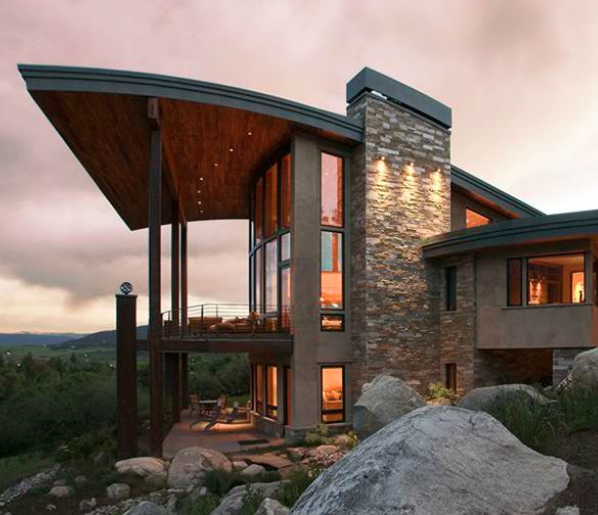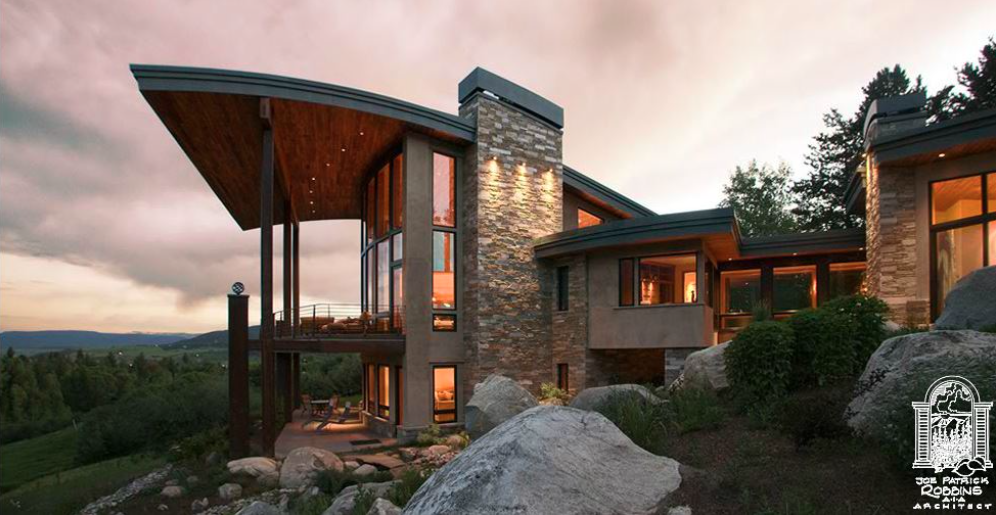Mountain Architecture Year in Review: An Art Form of Compromise
Trends come and go, but for longtime Steamboat architect Joe Patrick Robbins, the client’s tastes are always the bottom line.
It doesn’t take much to see where Steamboat architecture is headed. There are enough construction sites around town to know that more modern features like single-pitched rooves and clean lines with a lot of metal and glass have arrived in Steamboat, along with the kind of high-end, high-dollar homes that were once associated with upscale resorts like Telluride, Vail, and Aspen.
But one thing remains the same, according to Joe Patrick Robbins, an architect who has been designing houses in Steamboat for 45 years: Regardless of the trends, good design is always going to be timeless. “It’s really important that an architectural design isn’t so tied to a trend or a fad that it then becomes easily identified as a house that’s built in certain time period. A really thoughtful design is going to have a certain timeless element.”
Robbins describes architecture as “an art form of compromise” and says that ultimately, it’s the client who dictates home design, not a trend. “More modern design is catching on in Steamboat, but as an architect, you have to be open to different tastes. The desire of the client, the site, the weather and other variables all enter into the design. You can’t create something that doesn’t relate to who you’re designing for or where you’re designing it.”
When it comes to identifying new trends, Robbins is most excited about sustainability and the demand for design that is environmentally conscious. New technologies make it easier to create homes with that goal in mind.
We caught up with Robbins to talk about sustainable design and other trends to look out for in 2018.
Bigger is not always better.
“Some of my wealthier clients, people who would normally be wanting 10,000-square foot houses are thinking about designing smaller houses with more attention to detail,” Robbins says.
Green building is becoming the norm.
“There is a real awareness of energy efficiency,” Robbins says. “What we’re finding is that we have a lot of tools and technology we didn’t have before that allow us to achieve things like passive solar and a tighter envelope where energy can’t escape.” Robbins says his firm now conducts shadow and sun studies to make those houses more ideally suited to winter and summer sun. Tools like drones can fly over a site and capture a 3D image of the lot to determine where the house would be best oriented to take advantage of thermal heat in the winter and shade in the summer.
If you need a contractor, wait in line.
Robbins says there are fewer contractors available now than ever before. And because inventory of homes for sale is thin, new construction is more in demand than ever, putting more pressure on supply. “After the recession, a lot of the older more established contractors basically retired, and some of the subcontractors and carpenters who didn’t have work left town. So now we’re really having a hard time finding good quality workers and contractors,” Robbins says. The good news is, technological advances in construction equipment make the existing crews a lot more efficient.
Energy efficiency starts from the ground up.
Robbins says there is a lot more effort going into making sure a house is energy efficient from the way it’s built, with integrated systems specifically for that purpose. “This idea would have been considered radical 20 years ago, to build a tight, energy efficient house to this specific climate. But now it’s become mainstream, and the building codes are catching up to that now, too.” Robbins says many of his houses are pressure tested with a blower door test and an infrared sensor to make sure there are no air leaks or thermal weaknesses in the building envelope.
Technological advances make it easier to save on energy.
Robbins says there have been “leaps and bounds” made in insulation products that are being used on the outside surface of a house, as well as radiant heating systems, high efficiency boilers, and LED lighting. The advent of smart homes with systems that can be controlled remotely has also made it easier for second home owners to conserve. “Now homeowners can control everything from lighting and thermostats to turning on the hot tub from anywhere in the world,” Robbins says.
“Steamboat modern” is not an oxymoron.
For many years, big subdivisions like Marabou, Catamount, and Storm Mountain Ranch had strict design review boards that preferred more traditional western ranch style design. “Contemporary design has always been more popular in places like Aspen and Telluride but that’s changing,” Robbins says. “Design review boards are becoming more open to contemporary design, so we’re seeing a trend in that direction. It’s still warm and inviting and suited to Steamboat’s mountain climate, but some of these more traditional design review boards are starting to move in that direction. However, there is also still a demand for more traditional design. Steamboat is in a transition, I’d say.”
Originally published on Steamboatsir.com, reproduced with permission.







Links
Steamboat Areas
Popular Searches
Broker Associate
Popular Searches
Didn't find what you were looking for?